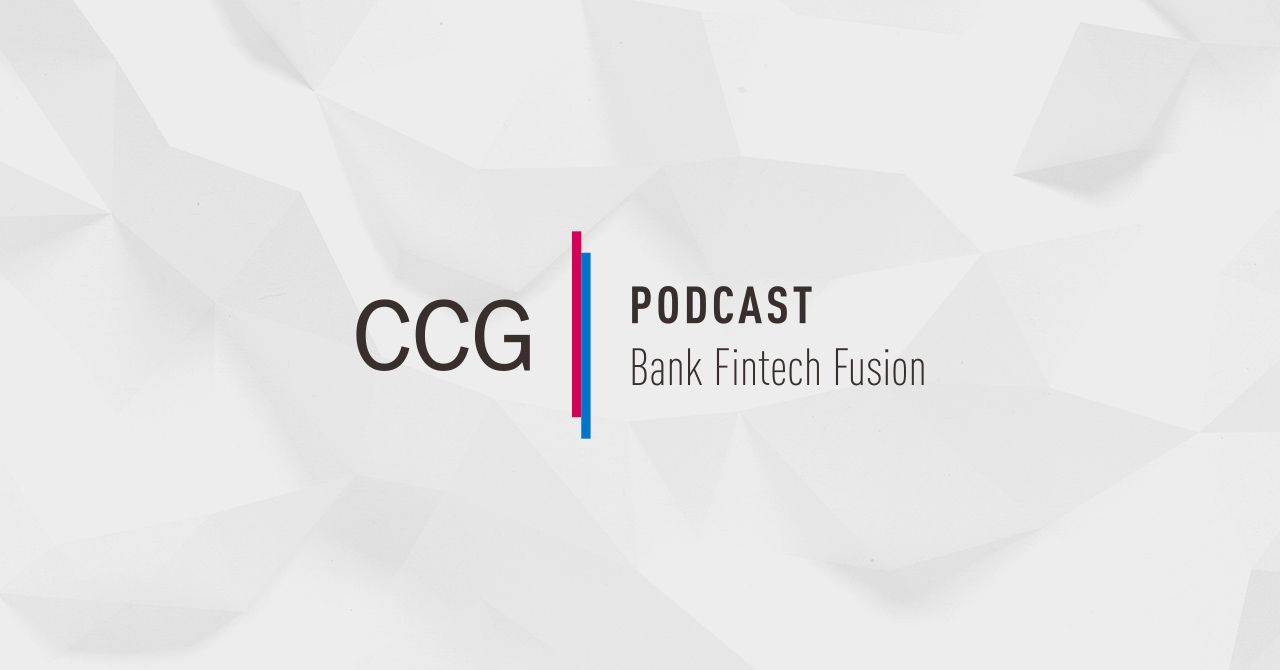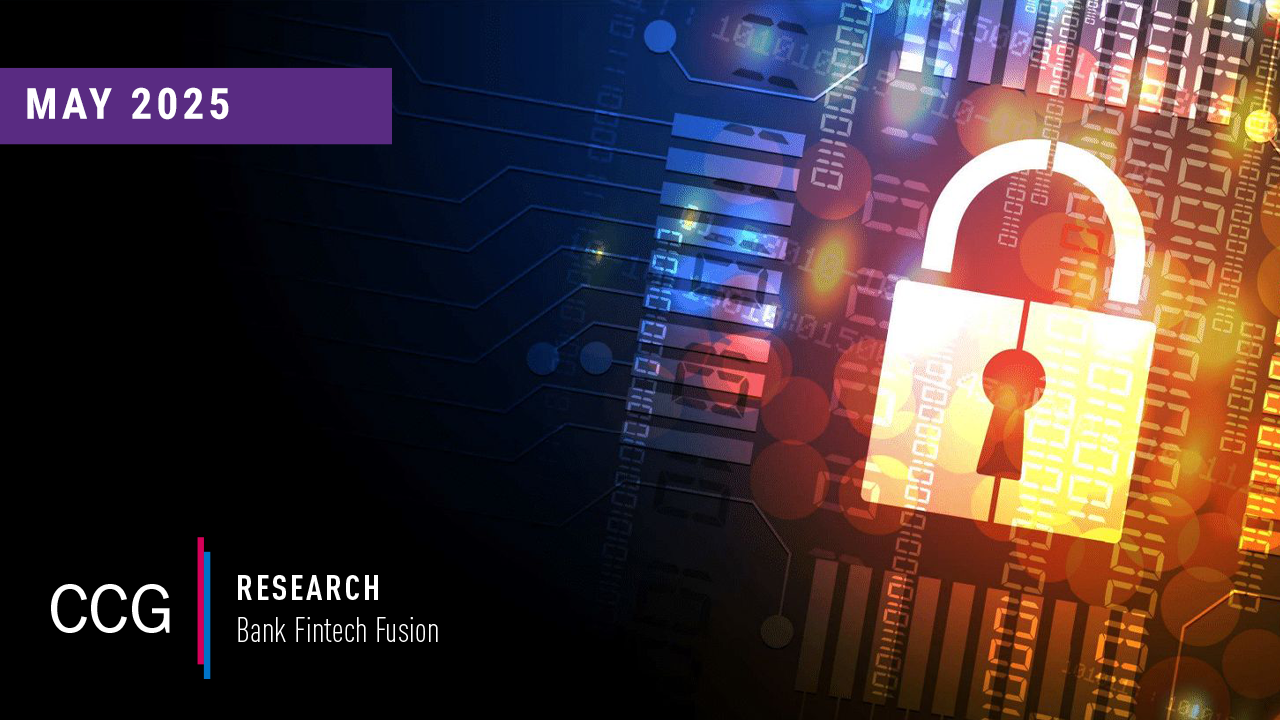Tiana will be joined by John Peckham, fellow Principal at CCG as they walk through how to execute on areas of opportunities. We have a choice to continue, change, or cancel a process. Operational processes call for several levels of review including to eliminate, automate, or consolidate. Risk management calls for reinforcement or implementation. Then there are metrics that help drive performance and quality control. Tiana provides an overview of these areas to help you take action.
Podcast: Download (Duration: 14:40 – 14.7MB)
Subscribe: Apple Podcasts | Google Podcasts | iHeartRadio | Stitcher | TuneIn | Deezer
Read the full transcript here:
Tiana Brown [00:00:04] Hello, welcome to Bank Fintech Fusion’s third episode of the Bank Operational Alignment series. I’m Tiana Brown, Principal at CCG Catalyst, and with me I have John Peckham, also a Principal at CCG Catlayst. Hi, John.
John Peckham [00:00:19] Hey Tiana, thanks for having me today.
Tiana Brown [00:00:20] Absolutely. I’m really excited about this conversation. In Episode one and two we walked through identifying how your business units performance supports the overall organizational goals and how to get full visibility of the overall help of your business unit. In today’s episode, we are going to discuss how operational alignment calls for current process review, risk assessments and implementing key performance indicators.
Tiana Brown [00:00:50] So, John, let’s start with discussing how important it is for a financial services organization to complete an internal operational assessment, especially today. And tell me your thoughts on what makes an internal operational assessment effective.
John Peckham [00:01:06] Sure. First of all, like with most things, I think it starts with attitude. By that, I mean, if you have a continuous improvement mindset, rather than trying to prove that you’re the best all the time, I think you’re going to end up with a better result. I think being inclusive and by that I mean including your internal customers, your external customers, is going to be really beneficial to you as well. Ask them how they rate the effectiveness of your service and what’s important to them. After all, if they think your service is terrible, doesn’t really matter what you think. And lastly, look at how other organizations are doing what you’re doing and learn from them.
Tiana Brown [00:01:45] I love that. And I also love the context of continuous improvement mindset. It’s very important to have that. And once a leader establishes themselves as having that mindset, they’re trusted more in an organization and they’re expected to be really a problem solver and a solution driver versus just somebody who’s managing or leading in a space.
John Peckham [00:02:04] I agree.
Tiana Brown [00:02:06] Now, some things that you discovered through this type of assessment are potentially current risk within the organization. And these could be smaller risk, such as need to pivot work responsibilities in order to maximize the cost of employees or greater things such as not following regulatory guidelines, such as maybe fair lending practices, just for an example. So can you give us some information around best practices when risk is discovered during an assessment? Then I’d love to share some examples that I had maybe some experience with as well.
John Peckham [00:02:42] First of all, I think it’s important that you document it. When you find these risks or opportunities to improve, prioritize your findings and develop a plan and a timeline to address them. Second, report it to the appropriate body within your organization, whether that be your immediate supervisor, a steering committee or a risk committee, even to the board. No one likes to admit they have risks, but I find it’s much better to be transparent about these kinds of things and have a plan to address them rather than wait for somebody else to identify them as a result of another business process. Like an audit.
Tiana Brown [00:03:19] Yeah, absolutely. So I guess the example that comes to mind in my career, I’ve seen where someone has acknowledged too late that they identified a gap in the process. And so there’s a huge difference in identifying something that’s risk related after the fact and not saying anything about it. For example, let’s say I’ve identified it, I’ve gotten too busy and then I don’t mention it. Someone else brings it to my attention and I say, Oh yeah, I knew about that. You don’t have the same amount of credibility at that point.
John Peckham [00:03:50] I totally agree with you. It’s worse to say, oh, yeah, I knew about it and I haven’t done anything about it. I think what happens is we do these assessments. We find things that we can either improve upon or need to be corrected. We prioritize them in our own little world and then our priorities get trumped by bigger priorities within the organization. Then again, some other process comes along that exposes these issues. And you’re kind of left deer in the headlights kind of thing. I knew about it, I planned to work on it, but something else came up. You’re much better off saying, I’ve got this issue here’s how I plan to address it. In my view, it’s a high priority item and I need to get that wrapped into the broader priorities of the organization.
Tiana Brown [00:04:38] Yeah, I absolutely agree with that. I think that’s something for everyone that is listening today to highly considered. Now, operations in general would have to be my favorite piece related to financial services. And there’s so much that goes into successfully running a bank or fintech in order to successfully operate. We need people automation. Maybe robotics and for sure, we need to have a process to follow. You just touched on documented process as well. So I found that the best way to scale and perform is through establishing KPIs that drive performance towards the goal of the organization that truly supports the effort within each line of business. We refer to these as key performance indicators.
John Peckham [00:05:23] Again, surprise, I’m going to agree with you without having something to benchmark yourself against over time, you have no way of objectively knowing whether or not you’re performing to your customers expectations. You have no way of gauging whether your performance is improving or declining over time, nor identifying where your areas for improvement are. Lastly, without metrics neither you nor your team members have an objective way of knowing how they’re doing collectively or individually, which may lead to a surprise a performance review time. And nobody likes those kinds of surprises. Another reason to establish KPIs is to help planning. For example, if you know you have capacity constraints say one person can produce X number of widgets per day, the right KPIs monitored over which over time will help you proactively address those constraints by adding resources timely. They’ll also help you build your business case when you go to look for funding or an FTE. Finally publish your KPIs to your constituents, provide that level of transparency to build trust and again reduce surprises.
Tiana Brown [00:06:38] Absolutely.
John Peckham [00:06:40] So with all that being said, what would you suggest is a recommended approach for leaders today in establishing your activities?
Tiana Brown [00:06:49] Well, first, they do need to define what they’re trying to accomplish, as we discussed in the first two episodes of this podcast. Now, then it’s important to go back and review the previous performance. So understanding what’s already taken place, where we can improve and what new goals might look like for the organization or that business unit. Precisely. So with this information, leaders can recognize their opportunities. I love going back and looking at old metrics from let’s say I always give it a 30, 60, 90 day, maybe 120 days back. You can even do annual if there’s been KPIs in place that long. And for example, measuring and comparing individual performance is really big. That alone will tell a business unit where there can be maybe more accomplished when it comes to productivity of their employees. So let’s say for instance, where there were never KPIs in place. Now, this is really common in fintech companies today as they usually just run with their business without any definition of process. They’re just doing their thing. And that’s OK to begin with. So with technology today, that’s where we have the capabilities to go back and pull data to retract the production. So this enables us to calculate output and set new expectations for future performance. So some performance items that can’t be measured and you’ll find this from time to time. It’s nothing to be alarmed, but it’s also not something to just ignore and say, oh, we can’t measure it. Well, we’ll just get it done. This is where you can be absolutely creative in finding ways to capture that productivity. And however, there’s just various forms of doing this, which is where the consultant might come into place if you just can’t reach that result on your own. So, for example, if financial services call center would measure performance in ways of average handle time for call resolution, there’d be customer SAT scores. This will drive the way that your employees are treating your your clients and on the other hand, back office operations, which, as we all know, that’s my favorite with potentially track. Let’s say, depending on the line of business, it could be the number of legal orders, number of claims resolved or loans funded, not to mention managing service level time frames is also to be considered as a KPI. So if there are internal and external service level agreements or SLAs in place, these types of agreements are very important because they drive not only performance, but they drive the relationships.
John Peckham [00:09:26] Yes, yes, they do. And I want to kind of take off a little bit on a comment you made earlier. You talked a little bit about how some things are hard to measure in that there’s a need to be creative. I would argue that if something is important enough, you will find a way to measure it. You should find a way to measure. Yes, you may need to be creative. Maybe instead of looking at a strictly numerical output, you look at things like net promoter score. You look at things like results of end user focus groups or things of that nature. The point is, if it’s important to you, if it’s important to your customer, if it’s important to your business, you’ll find a way to measure it.
Tiana Brown [00:10:14] You will absolutely.
John Peckham [00:10:16] So with that being said, tell me, how does this impact the client’s. Does reviewing the process, mitigating risk and establishing KPI’s only have an internal impact, or is there more we should be thinking about?
Tiana Brown [00:10:31] Oh, it absolutely goes beyond the internal impact. Now, everything a financial services organization does and in this case for us, a bank or fintech impacts the client. So after all, this is why banks and fintechs operate today on a daily basis is for their client. So taking the time to understand what was planned, how it’s actually going internally and externally and making adjustments needs internal improvements. But it’s also ongoing enhanced service for clients. It’s just really exciting to know that what you do is impacting the external audience. And I find that the more honest that you can be about how things are truly going within your organization, the better your organization is actually going to be long term. Now, what are your thoughts on this, John?
John Peckham [00:11:20] So a couple of things. One, I think the more you bring the external impact back to your staff, the more you motivate your staff when your staff can see what they do, how what they do directly impacts the success of the client. I think that motivation right there is almost as good as compensation. Right. But I would I would add that in establishing KPI’s, it’s imperative to ask your constituents what’s important to them without doing so, you risk establishing KPI’s or provide little or no value to your customers, whether they be internal or external. I also strongly believe that transparency is key. Share those results with all of your stakeholders. If you’re going through the trouble of measuring your performance, your KPIs, publishing them helps you build trust and enhance that relationship. Like you talked about earlier, this should not be a one and done exercise. It’s important that you do this periodically. Circle back. Are these KPIs that are measuring still relevant today? Is there an opportunity for me to improve the water? What do my customers think of them? A CEO that I once worked for would say inspect what you expect. Your KPIs, your indicators, are really your exact right. You work with your customers. You work with your internal constituents to develop what those measures are and then how you’re performing to those publishing those actual numbers is the inspect part. It allows you to inspect and the larger customer to inspect.
Tiana Brown [00:13:04] I love that everyone listening to just go by that quote of your CEO. And one thing that you said here, which I love and we’re going to talk more later on in another episode in this podcast series, I believe episode five, which is this is not a one and done exercise. If your organization is planning to evolve in scale, going back and looking at the KPIs that you have in place is absolutely critical and necessary in order to scale and actually continue to improve.
John Peckham [00:13:37] Yeah, and by the way, time isn’t always your measure of when to revisit these things. Right? It’s great to say I’ll revisit these every year, but maybe every year isn’t the right time. Maybe there’s been a significant change in your business, right. That maybe that should drive your time to revisit those KPIs.
Tiana Brown [00:13:57] Yeah, exactly. I completely agree with you. So today, John, and I really hope that you’ve been able to take away how operational alignment calls for process review risk assessments and implementing key performance indicators. Thank you for listening to today’s podcast. If you’ve enjoyed this topic and are interested in learning more about the bank operational alignment, please subscribe to our Bank Fintech Fusion Channel. Again, I’m Tiana Brown, Principal at CCG Catalyst, and I’ll see you next time.






